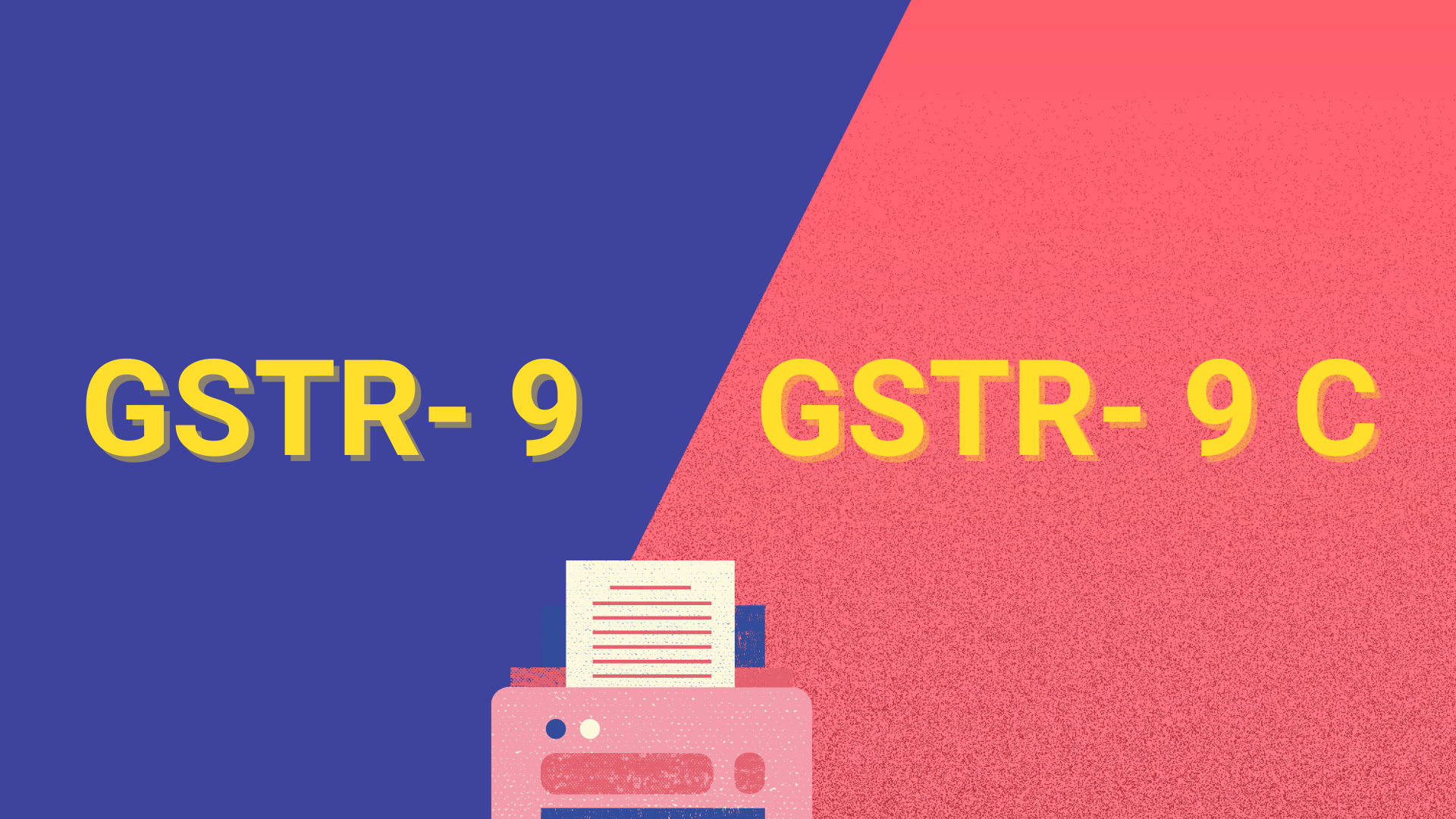GST is hoped to simplify the indirect taxes for certain persons, reduce human intervention and bring transparency in taxation. GST practitioners are supposed to come to the aid of the income tax returnees in GST compliance. Below given is a list of steps to enter into the role.
Who is a GST Practitioner, and What do You think their Role is?
A GST practitioner is a person duly registered in the GST portal and authorised by the Commissioner or Centre to prepare or issue any invoice or other document for the sale of goods or provision of services. He is also supposed to be authorised by the Commissioner to receive any certificate, return, declaration, or other act under the Goods and Services Tax (GST).
A person will be eligible to prepare invoices or other documents for goods or services in foreign currency if he has obtained authorisation from the Central Government. They make sure taxpayers put in relevant details in their digital papers and taxable transactions, respectively taxable and tax-free purchases, collection of reimbursements done by the taxpayer, etc.

A GST practitioner is a person who is registered with the GST Network Portal in the respective role. He helps small and medium businesses to comply with the GST requirements. He also facilitates compliance under GST which means that he assists taxpayers to achieve timely completion of tax returns forms, assessing the correctness of the return etc.
In this sense, a registered GST Expert provides his services and helps taxpayers understand their tax liability and helps them maintain good records for a more straightforward assessment of returns by the tax authorities.
Importance of certification for GST Practitioners
The supervisory authority requires that anyone enrolling as a GSTP must qualify for the examination in a limited time span of two years after the enlistment. This rule shall commence from 1st July 2018. The GST Council has created a committee that will develop the syllabus for the examination and decide which body will conduct the test.

The importance of GSTP certification has been emphasised as the first step towards GST implementation. The GST practitioners would also perform their professional responsibilities as supporting staff to both corporate and customers. They have various roles and responsibilities regarding GST implementation. The GST practitioner certification will be a great help for the stakeholders, particularly the business community. Hence, thorough preparation should be done before appearing for the GSTP exam. This article discusses how to prepare yourself to successfully qualify for the exam concerning tips and strategies given below.
Important Rules and Guide to Becoming a Certified GST Practitioner

Below is a step-by-step process to becoming a GST Practitioner. The first step is to register or sign-up to the GST Network Portal. The second step is to download the relevant application form and submit it along with supporting documents. The fourth step involves an interview with the authority. And the final step is to ensure that you are classified into the appropriate role.
- Stage 1: Register in the GST gateway as a GST expert by filling out the structure PCT-01 and acquire the Enrollment endorsement with the help of structure PCT-02.
- Transfer important subtleties for enlistment as 'GST specialist' on the entryway. GSTN will produce an entity called the Temporary reference number (TRN) and confirm these subtleties through an OTP sent on the enlisted portable number. Transfer supporting reports and present the application through DSC or EVC procedures. An affirmation with the GSTP Enrollment number is obtained on the enlisted email ID within fifteen days.
- Appearing for the GSTP Exam directed by NACIN for confirmation. Inside two years of enlistment in the GST entrance, show up for the GSTP test led by NACIN paying imperative charges. Competitors should score at least half of the total marks to enlist in the role of an ensured GSTP. The rundown of selected GSTP would then be accessible to the GST typical gateway for the citizens to practice their decision.
Pre-requisites for the GSTP exam
To attain the position of the GST Practitioner, one has to make sure that they meet the pre-requisites of becoming a GST practitioner. Next, you have to register yourself with the GST portal through which you will be provided access to Form GSTR 1, 2 and 3. Taxpayers under this category are liable to pay an annual registration fee and an upfront fee called the user fee for a class of taxpayers that want to file on-demand basis.

On the off chance that the up-and-comer satisfies the essential conditions, he should enlist himself first in the GST entryway for GST professionals with the help of the document PCT-01, after which you get the enrolment number through the credential- PCT-02 from the concerned official after due enquiry. They should then show up for the GSTP test to get confirmed.
GST Practitioner Examination procedure
GST Practitioner Examination method follows the mandatory qualification of the respective exam to become an expert, which would be directed by the leading authority called NACIN.
Date of test:
The tests are led double a year across India at assigned focuses. The applicant can settle on his preferred focal point. The test date is informed by NACIN and is accessible through the GST gateway, GST Council Secretariat and in the primary English and territorial papers.
Enlistment:
The enlistment for this test should be possible on nacin.onlineregistrationform.org. Applicants are needed to log in with the assistance of GST enrolment number (client id) and PAN (secret key).
Charges:
The up-and-comer should pay assessment charges at the hour of enrolment. The reasonable expenses will be indicated on the NACIN site, alongside the way of instalment.
Mode of Exam:
It is a PC-based test comprising Multiple-Choice Questions, as it were.
Result announcement:
NACIN will announce the outcome within one month of the direct assessment and be imparted to the up-and-comer by email/post.
Leading Authority:
The NACIN-National Academy of Customs, Indirect assessments, and Narcotics assessment is the expert for guaranteeing the GST Practitioner course by the public authority.
GST Practitioner Exam Date:
The GSTP tests are led semiannually at assigned focuses across India and the dates as informed and available in the GST gateway, papers and the Secretariat of the GST Council by NACIN.
GST Practitioner Exam Website Details:
You can enlist for the GSTP test on the connection http://nacin.onlineregistrationform.org utilising the GST enlistment number as the User ID and PAN subtleties as the secret word.
GST Exam Fee Details:
The subtleties of the GST Practitioner test online enlistment charges are accessible with instalment alternatives on the NACIN site.
The GSTP Exam:
The test for a GST Practitioner is an online test with 100 Multiple Choice Questions to be replied to in 2.5 hours and a passing score of half. There is no limit on the number of endeavours in the two years.
Statement of Results:
NACIN conveys the outcomes through post/email within one month of the test.
Application Fee
Every person who is desirous of becoming a GST practitioner is required to pay an application fee of Rs. 5000/- (Rs. two thousand five hundred) for this purpose. The applicant must also provide evidence of its current annual transaction revenue along with the audited balance sheet for the preceding financial year at least one of which shall be within the preceding 24 months immediately preceding the date on which the applicant makes the application.
Do's and Dont's for GSTP exam
Do's:
- Register for the test on the NACIN site well ahead of time.
- Pay assessment expenses.
- Study the GST laws and return recording measures ultimately.
- Stay refreshed with changes in GST law
- Convey unique character reports like PAN, Voter ID and Passport.
- Convey the Admit card to the assessment corridor.
Don'ts:
- Showing up after the expected time by thirty minutes for the assessment. Doors close fifteen minutes before the initiation of the test.
- Bring restricted things like cell phones, Bluetooth gadgets inside the assessment corridor.
- Utilise uncalled for means or works on during the assessment.
- Manage the equipment/programming sent for the assessment.
- Get accessibility with the test community in any way.
Essential Conditions for Becoming a GST Practitioner
The following basic parameters require fulfilment before applying for the GST examination:
- They ought to be a resident of India.
- They ought to be of sound brain.
- They ought not to be decreed as a ruined.
- They ought to be not be sentenced for an offence with the detainment of two years or more.
Qualifications for Becoming a GST Practitioner
The accompanying individuals can become GST experts:
- A resigned official of the Commercial Tax Department of any State Government or the CBIC who has worked in a post of Group-B (or higher) gazetted official for a base time of two years.
- Alumni or postgraduate in Commerce, Law, Banking including Higher Auditing, Business Administration or Business Management from any Indian University or a perceived Foreign University.
- A Chartered Accountant, Cost Accountant or a Company Secretary holding Certificate of Practice (COP).
Roles & Responsibilities Performed by a GST Practitioner
- Application for alteration/dropping/renouncement of crossing out of GST enlistment (after affirmation from the enrolled individual).
- Application for selecting into or withdrawal from the organisation demand.
- View the electronic money, obligation and credit records.
- GSTR 1, GSTR-3B, CMP-08, ITC-04 and different returns and ITC structures- GSTR-9 and GSTR-4.
- Make challan and store cash into the electronic money record.
- A case for discount in structure RFD-11 (after affirmation from the enlisted individual).
- View and make applications on Advance Rulings, DRC-03, and LUT.
- Survey GST takes note.
- Show up as an approved agent.
GST Practitioner structures:
The critical structures for a GST specialist are:
- Structure GST PCT-1.
- GSTP enlistment application structure.
- Structure GST PCT-2.
- Enlistment Certificate structure for GST expert gave by the GST official.
- Structure GST PCT-3.
- Show-cause Notice requesting GSTP's extra data on enlistment application/revealed unfortunate behaviour.
- Structure GST PCT-4.
Request on enlistment dismissal/GSTP preclusion in wrongdoing cases
Process of Registration:
Stage 1 – Visit the GST entrance at www.gst.gov.in


Stage 2 – Go to Services > Registration tab. Snap on 'New Registration'.
The page for new enrollment shows up.
Stage 3 – On the 'New Registration' page,
- Snap on "New Registration".
- In the 'I'm a' dropdown, select "GST Practitioner.
- Select the State and District from the dropdown.
- Enter Name, PAN, Email Address and Mobile Number.
- Enter the manual human test code.
- Snap on 'Continue'.
After approval, you will be diverted to the OTP check page.

Stage 4 – Enter the two diverse OTPs got on email and cell phone numbers. Snap on 'Continue' .
Stage 5 – This will produce a TRN. Snap on 'Continue'.
Stage 6 – Enter TRN and Captcha. Snap on 'Continue'.

Stage 7 – Enter the OTP got on the enrolled portable number and snap on 'Continue.
Stage 8 – Enter every one of the subtleties needed by this part and transfer reports in .pdf and .jpeg design. Snap on 'Submit' on the Verification page.

Steps for accepting or rejecting the Role and Responsibilities
Stage 1 – Login to the GST entryway as a GST expert.
Stage 2 – Click on the button 'Acknowledge/reject citizen' accessible on the dashboard or by exploring to Services > User Services > Accept/Reject Taxpayer alternative.
Stage 3 – Click on the 'View' connect against the commitment demand that should be supported or dismissed.
Stage 4 – Either Accept or Reject the commitment demand as follows:
(1) To Accept: Select the assent box and snap on the 'Submit with DSC or EVC' button to finish the cycle.
(2) To dismiss: Without checking the assent box, click on the 'Reject' button to finish the cycle.
Email is shipped off to the GST professional and the individual citizen.
Key Takeaways
- If you are a business person, have a desire to help small and medium businesses to comply with GST provisions and be better equipped to take care of their GST compliances, then being a GST practitioner may be a great idea for you.
- A GST Practitioner is a professional who helps in GST Registration or in GST return filing for Small Business Under the GST law, only a person who has been registered and issued a GST registration number (assigned by GSTN ) can represent taxpayers and help them in the compliance of GST.
- To become a GST practitioner, a candidate should have a sound knowledge of the GST provisions and have a good understanding of the concept of taxation. After being an assessor for a period of two years, you can become a GST practitioner provided you pass an assessment test conducted by the government.
- Many people wonder how to become a GST practitioner. The simplest answer is that you need to be handling GST accounts of at least two or more business entities for at least one year. Apart from that you also need to have certain basic knowledge of accounting and law.
- Every business is required to register themselves with the GST portal for the aforementioned reasons. So, it is very important that your business hires a person who is a GST practitioner so that you can get the registration done easily. You have to look for a person who is willing to do registration of your company and other tax-related services for a long time because it consumes a lot of time and energy
Related Articles












